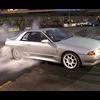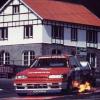Power Fc
Announcements
-
Similar Content
-
Latest Posts
-
Can try Maxima. Or random Infiniti models from the same era. Good luck with your hunt, let us know what you find!
-
I got the Repco video recommended on YouTube.
-
Welcome Mark. Do you have a Skyline or are you looking to get one?
-
By Dose Pipe Sutututu · Posted
Looks decent, did you need to remove the dash? Tempting, but the effort and time I cbf.
-






Recommended Posts
Create an account or sign in to comment
You need to be a member in order to leave a comment
Create an account
Sign up for a new account in our community. It's easy!
Register a new accountSign in
Already have an account? Sign in here.
Sign In Now